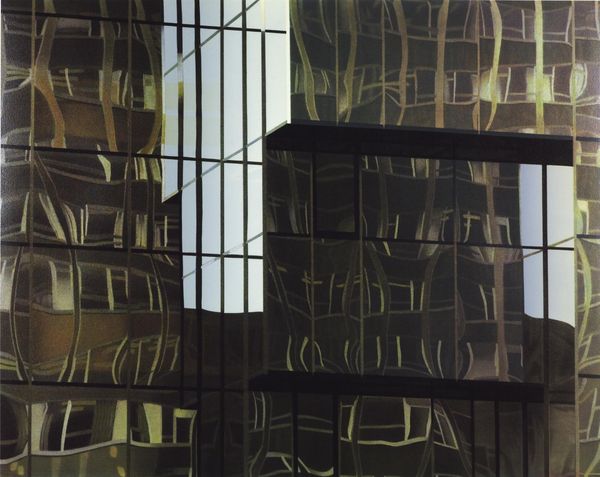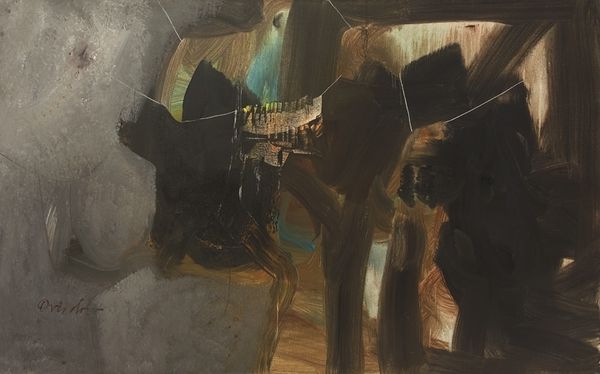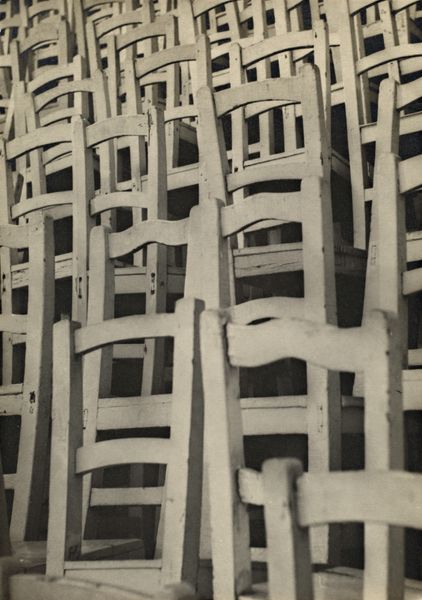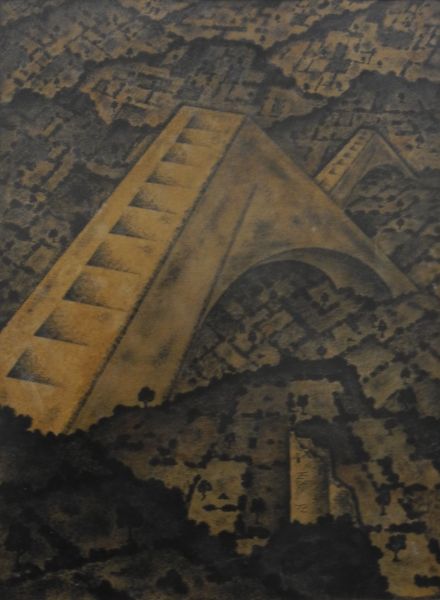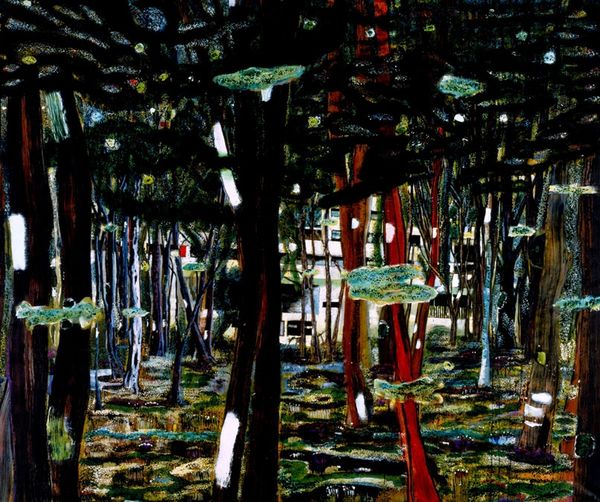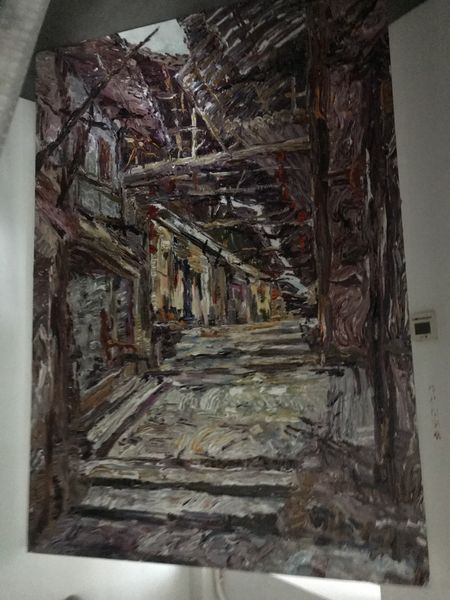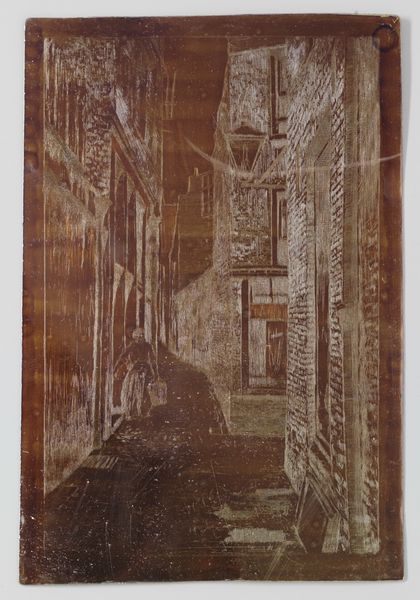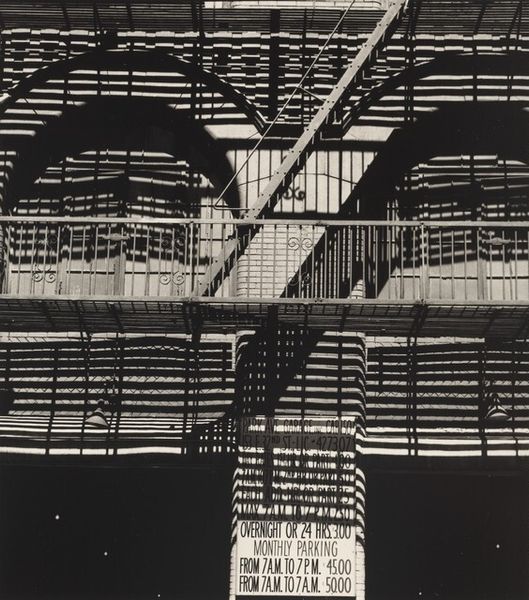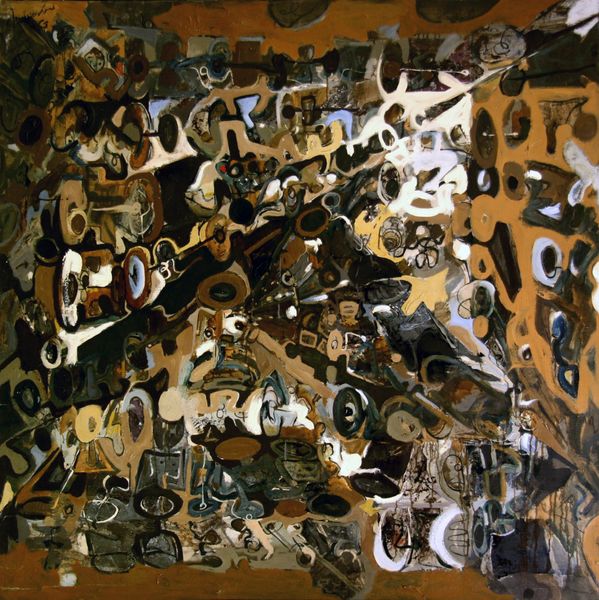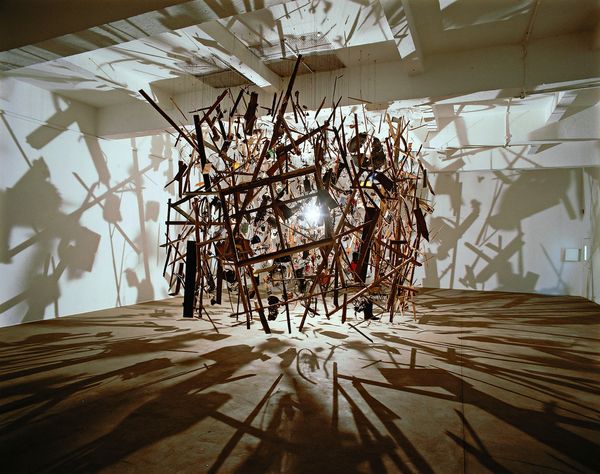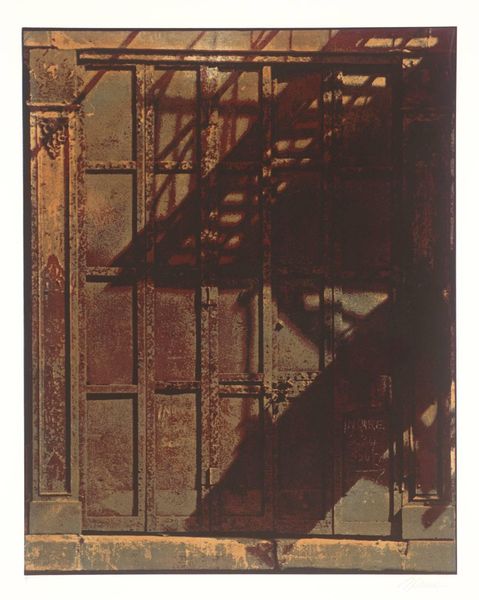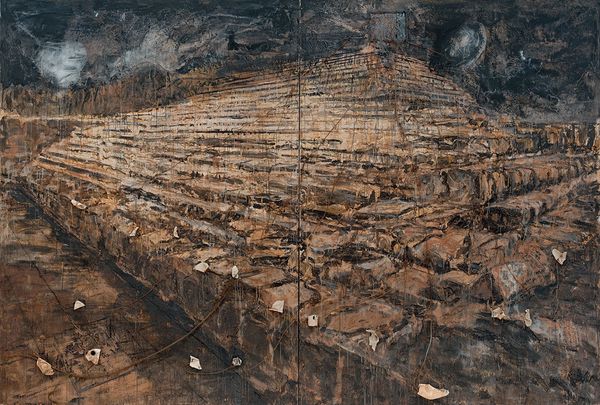
Copyright: Tadashi Kawamata,Fair Use
Here we see a striking, large-scale installation made from found wooden chairs by the Japanese artist Tadashi Kawamata. The chairs are stacked and interwoven, creating a dense, cavernous structure, a kind of architectural folly. The overall composition overwhelms the viewer. It's as though the chairs have taken on a life of their own, escaping their usual function to form this imposing mass. Light filters through the gaps, adding a sense of depth, illuminating this chaotic yet strangely ordered assemblage. The chairs themselves, as everyday objects, carry connotations of domesticity, rest, and social gatherings. But here, massed together, they destabilize these associations, transforming into something more monumental and unsettling. Kawamata's use of repetition and accumulation speaks to poststructuralist ideas about how meaning is constructed through difference and repetition. The individual chair loses its singularity, becoming part of a larger system. This challenges our conventional understanding of objects and their purpose. Note the formal tension between order and chaos, mass and void; it’s a potent reminder that art can disrupt our perceptions, prompting us to rethink the familiar.
Comments
No comments
Be the first to comment and join the conversation on the ultimate creative platform.
